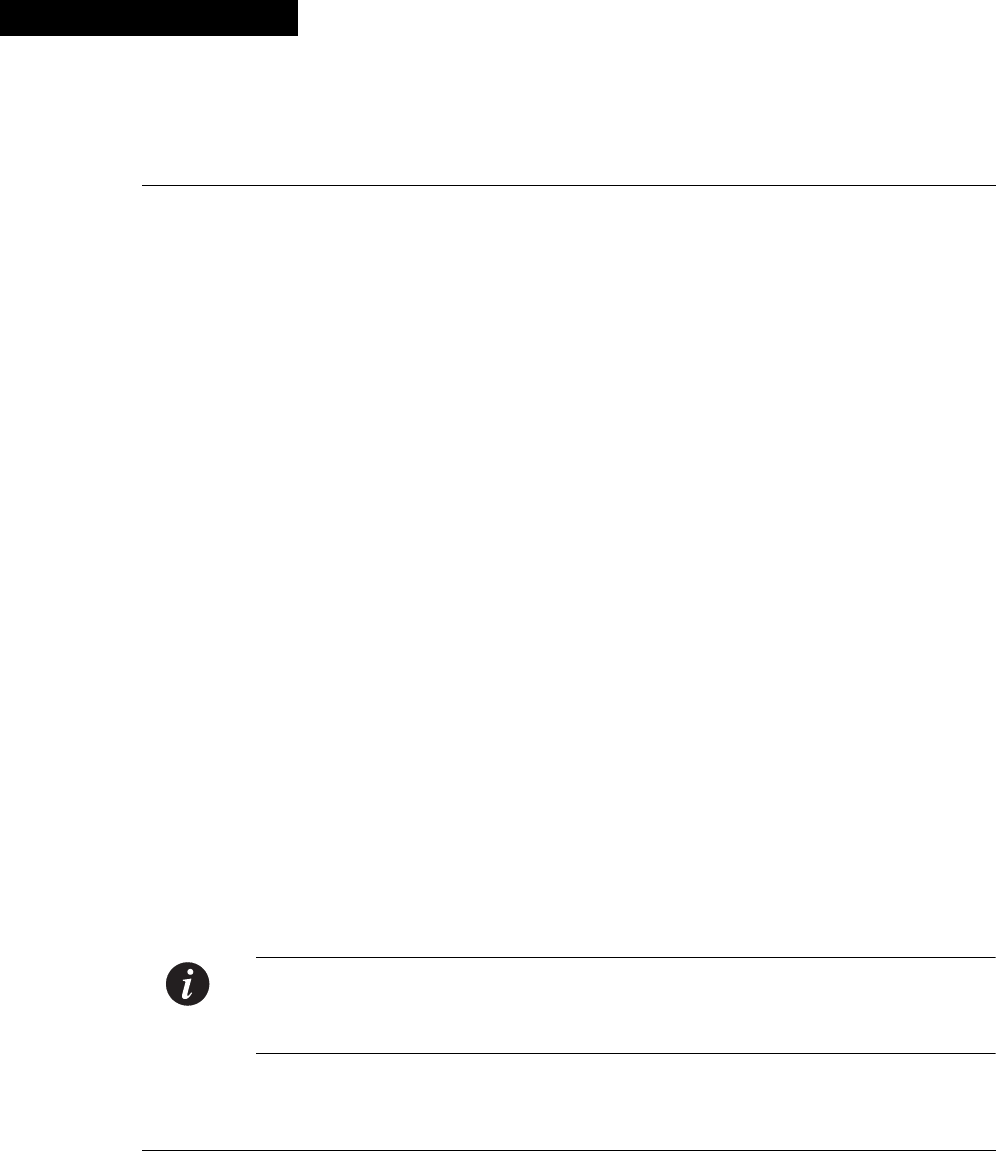
Avaya P333R-LB User’s Guide 39
Chapter 8
User Authentication
Introduction
A secure system provides safeguards to insure that only authorized personnel can
perform configuration procedures. In Avaya P330, these safeguards form part of
the CLI architecture and conventions.
CLI Architecture
The P330 stack supports both Layer 2 switching and Layer 3 switching.
The P333R-LB CLI includes two CLI entities to support this functionality.
• The Switch CLI entity is used to manage Layer 2 switching of the entire stack.
CLI commands for managing Layer 2 switching are described in the Avaya
P330: Reference Guide.
• The Router CLI entity is used to manage Layer 3 switching of a single module.
CLI commands for managing Layer 3 switching are described in the Avaya
P330: Reference Guide.
To switch between the entities, use the session command.
Security Levels
There are four security access levels – User, Privileged, Configure and Supervisor.
• The User level (‘read-only’) is a general access level used to show system
parameter values.
• The Privileged level (‘read-write’) is used by site personnel to access stack
configuration options.
• The Configure level is used by site personnel for Layer 3 configuration.
• The Supervisor level (‘administrator’) is used to define user names, passwords,
and access levels of up to 10 local users. In Supervisor level you can also access
RADIUS authentication configuration commands.
Note: If you wish to define more than ten users per switch, or accounts for a user on
multiple switches, you should use RADIUS (Remote Authentication Dial-In User
Service).
A login name and password are always required to access the CLI and the
commands. The login name, password, and access-type (i.e., security level) for a


















